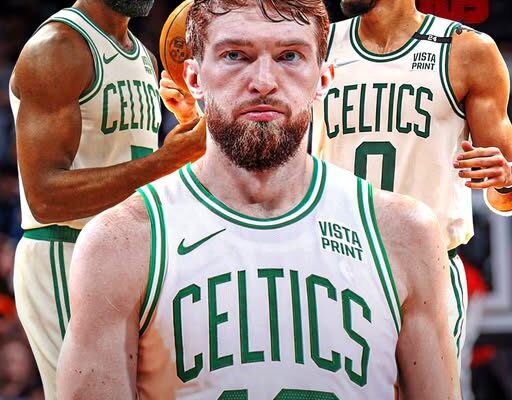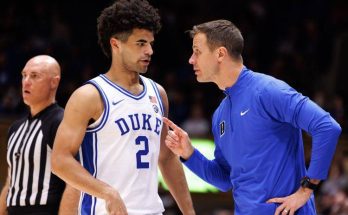With Jayson Tatum sidelined by injury and the Boston Celtics entering a pivotal crossroads following another disappointing playoff exit, the franchise finds itself grappling with the urgent need for reinvention. The Celtics have long been a bastion of Eastern Conference excellence, but as the landscape of the NBA rapidly evolves, Boston’s current core seems to be losing the luster it once possessed. After multiple playoff disappointments despite deep runs and a consistent presence as contenders, the team appears ready to embrace a new chapter—one that could hinge on a bold and transformative trade to secure a fresh franchise cornerstone.
Jayson Tatum’s injury is more than a mere setback; it’s a stark reminder of the fragility and impermanence that even elite players face in their careers. Tatum, who has been the Celtics’ star forward and offensive leader for several seasons, has demonstrated the ability to carry the team on his back through thick and thin. His scoring prowess, ability to create plays, and defensive versatility make him an invaluable asset. Yet, the Celtics’ recent playoff flameouts have cast doubt over whether the current core, even with Tatum leading the charge, can break through the conference’s upper echelon and compete at the highest level against juggernauts like the Milwaukee Bucks, Miami Heat, and the resurgent Philadelphia 76ers.
The injury forces the Celtics to confront hard questions: How sustainable is their present core? Can they rely on Tatum’s leadership alone, or is it time to rethink the trajectory of the team altogether? What does the future look like when key players might face lingering health issues or the inevitable challenges of aging? It is in this climate of uncertainty that a bold new trade idea has gained traction—one that could redefine Boston’s identity and offer a renewed pathway to contention.
At the heart of this trade proposition is the concept of acquiring a fresh cornerstone, a player with the potential to elevate the Celtics beyond the plateau they have been stuck on. This player would need to possess a unique combination of youth, star potential, and complementary skills that fit seamlessly with Boston’s style and culture. The idea is not merely to replace Tatum but to build around a new centerpiece who can grow alongside the existing pieces while instilling a new energy and direction into the franchise.
One of the most intriguing aspects of this proposed trade is that it reflects a broader shift in the NBA’s strategic landscape. Teams are increasingly willing to part with established stars or promising young players if it means securing a better fit or unlocking greater long-term potential. The Celtics, historically patient and methodical in their roster construction, may now be prepared to make a bold move that would have been unthinkable just a year ago. This reflects a recognition that the status quo has not delivered the championship success the organization and fans crave.
There are several candidates around the league who could serve as the fulcrum of this new Celtics era, though the specifics of the trade remain fluid. Rumors have swirled around potential package deals involving a mix of Boston’s current assets, including draft picks, promising role players, and perhaps even veterans with expiring contracts to make salary matching feasible. The front office is reportedly exploring all avenues, understanding that the right trade could reset the team’s trajectory for years to come.
Beyond just acquiring a new star, the trade would signify a broader cultural reset. The Celtics, known for their storied history and commitment to team-oriented basketball, have had a core that sometimes leaned heavily on individual talent without consistently finding balance. The new player, whoever they may be, would ideally embody a blend of leadership, work ethic, and basketball IQ that aligns with Boston’s values. This person would need to become not just the best player on the roster but also a galvanizing figure who elevates the entire team’s mentality.
This proposed trade also reflects the modern NBA’s increasing emphasis on versatility and two-way impact. The ideal new cornerstone wouldn’t just be a scorer but someone who can influence the game on multiple fronts—defense, playmaking, rebounding, and intangible leadership. The Celtics have long aimed to build around players who fit this mold, and with Tatum’s injury spotlighting the fragility of relying on a single star, diversifying the team’s core talent base has become a strategic imperative.
Critics may question the wisdom of trading established assets or potentially disrupting team chemistry during a phase that could still yield playoff success. However, the counterargument is that incremental improvements have proven insufficient. The Celtics’ playoff disappointments have underscored that while the team remains competitive, it lacks the elite star power and depth needed to push past championship-caliber opponents. Sometimes, bold risks are necessary to achieve transformative rewards.
Moreover, the timing could be advantageous for Boston. The NBA’s trade market is fluid, and certain teams may be motivated to move pieces in the wake of their own strategic shifts or financial considerations. The Celtics’ combination of future draft capital, solid role players, and a respected coaching staff makes them an attractive trade partner. For teams looking to shake up their rosters, Boston could present a compelling destination that offers both opportunity and stability.
It’s also worth noting that the Celtics’ fan base, while passionate and demanding, has shown a willingness to embrace change when it promises the possibility of a title. The storied franchise has undergone rebuilds and reinventions throughout its history—from the Bill Russell dynasty to the Larry Bird era and beyond. Today’s potential trade would be another chapter in that ongoing saga, a reflection of the franchise’s enduring pursuit of excellence.
Of course, any trade of this magnitude involves considerable uncertainty and risk. There’s no guarantee that the new cornerstone will fit perfectly or that the chemistry of the roster will immediately improve. The Celtics’ front office must balance ambition with prudence, ensuring that they don’t mortgage the future for a quick fix. But given the current crossroads, hesitation could be more costly than bold action.
As Jayson Tatum continues his recovery, the Celtics will watch closely how the team performs without their star. This interim period offers a glimpse into what adjustments might be necessary and highlights the urgency of securing a sustainable long-term solution. The trade talks, rumors, and strategic discussions all point to a franchise in motion—a team eager to rewrite its narrative and reclaim its place among the NBA’s elite.
In summary, the Celtics’ post-injury reality and playoff frustrations have catalyzed a strategic reckoning. The bold trade idea to acquire a new franchise cornerstone is not just about swapping players; it’s about redefining Boston’s competitive identity and charting a path toward championship contention in a rapidly evolving NBA landscape. While the details remain in flux and the stakes are high, the willingness to embrace change signals a franchise committed to growth and excellence. For Celtics fans and the basketball world alike, the coming weeks and months promise to be an intriguing and consequential period—one that could shape the future of a storied franchise and the trajectory of the Eastern Conference for years to come.


